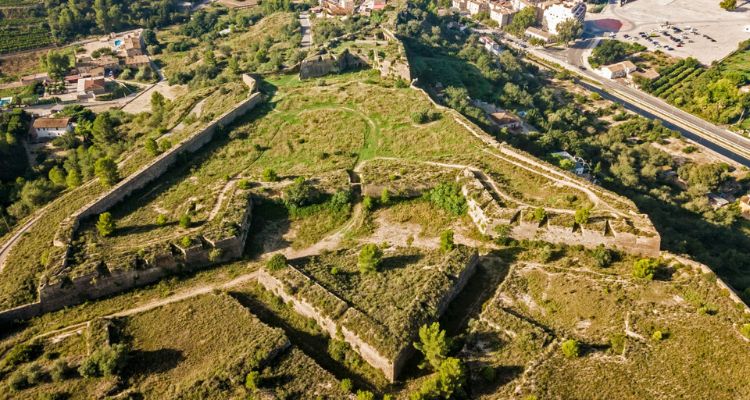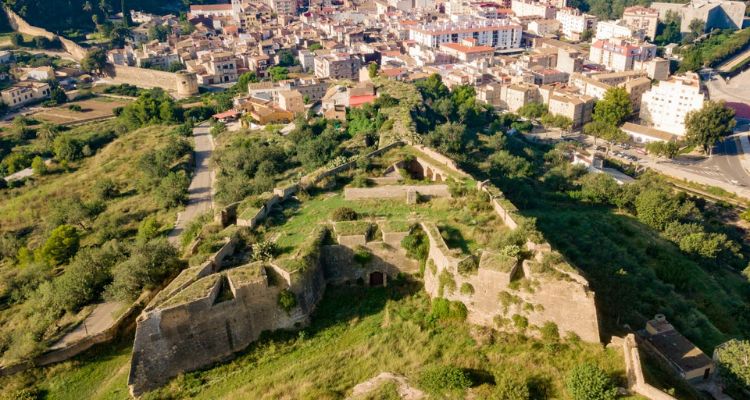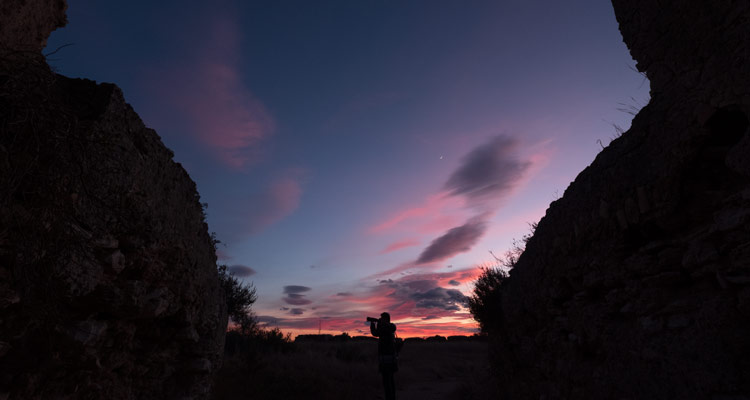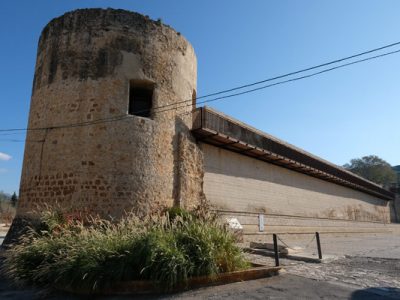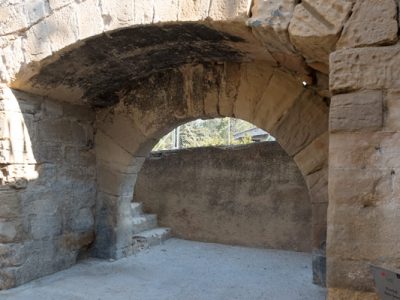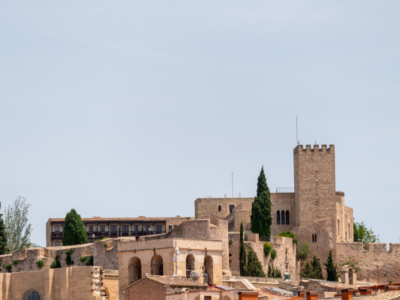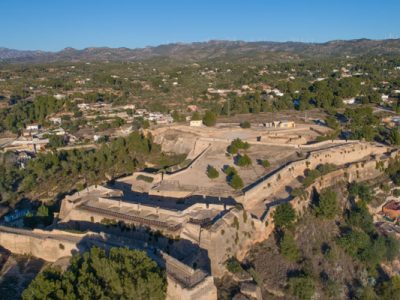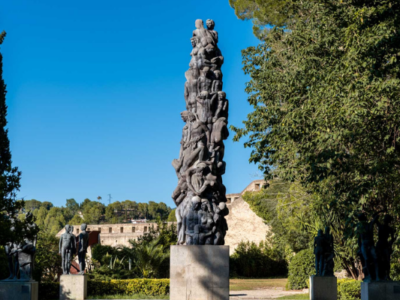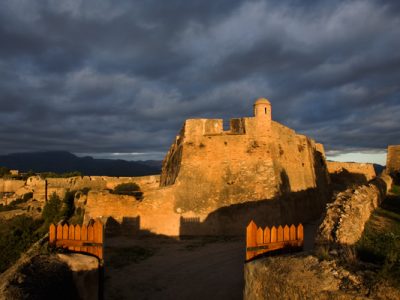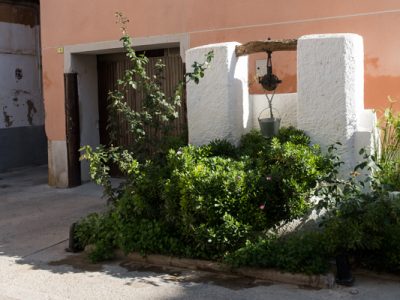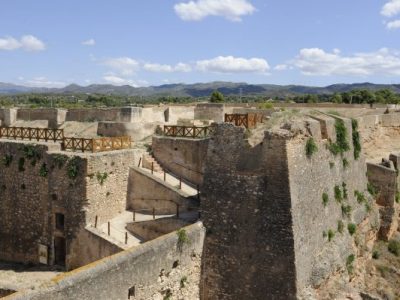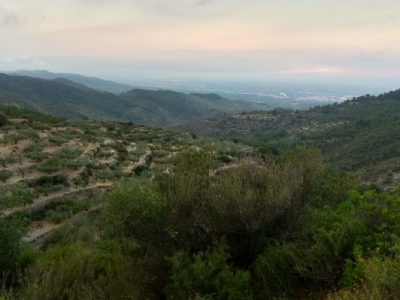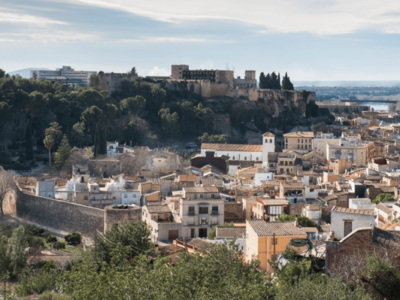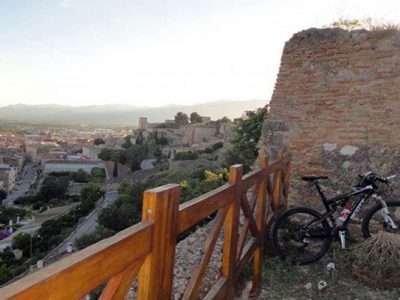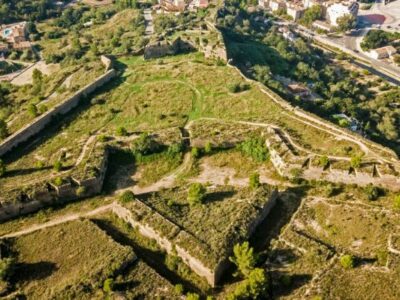Description
History of the Tenasses fortification
You are inside the first defensive element of the city of Tortosa, on its northernmost flank. The fortification of Tenasses, located on a hill on the outskirts of Tortosa, is the outermost defensive element of the entire walled area of the city.
The construction of the fortification was carried out in two stages: first, during the second half of the 17th century, and then, at the beginning of the 18th century, once the city was conquered by the Bourbon troops. It is a structure conceived as a defensive advance of the northern sector of the wall of Remolins with the aim of consolidating Tortosa as a strong place.
Tenasses is made up of two contiguous, but clearly differentiated enclosures: the first, closest to the city, contains two rooms, which were used as a powder store and cistern. The courtyard acts as a distributor from which the rooms are accessed or allows access to the upper part of the defensive body, where eighteen cannons are distributed. The second space is a fortified enclosure, of considerable dimensions, located next to the moat of the first section. It extends towards the northern plateau, with a large central core called Plaça d'armes. The north front concentrates a rampart fortification, with two semi-bulwarks joined by a central curtain, the hornabec, preceded by a moat with a covered path.
A privileged view of Vilanova
The elevated location of the Tenasses fortification allowed the control of the part of Remolins, with the Vilanova, or Call Jueu (Jewish quarter), located in the foreground. The panorama that can be seen from here was already collected in the 16th century by the Flemish painter Anton van den Wyngaerde in one of the two views he made during his stay in Tortosa: the one that shows the part of Remolins and the Call, with the wall that reached the river and with the Suda castle presiding over the entire walled area. Wyngaerde's other drawing captures the river front of the city, seen from the other side of the river, in Ferreries.
Safeguarding the city's heritage
Once the walled complex ceased to have defensive use, the military government ceased to give it utility. At the end of the 20th century, in 1971, the grounds of the Tenasses fortification went up for public auction. A group of eleven businessmen from Tortosa acquired the complex for 1,571,000 pesetas, with the intention of preventing the property from passing into the hands of others and the Tortosa City Council, in the future, ending up repurchasing the fortification in order to incorporate it into the town heritage. That action made it possible to safeguard a prominent element of the city's walled enclosure. In October 2014, forty-three years later, the City Council reached an agreement with the owners in order to make possible the change of ownership and the inclusion in the municipal catalogue.
In recent years, the City Council has initiated a series of actions in order to consolidate the whole of the fortification of Tenasses, within the recovery actions of the walled complex of Tortosa, in order to enhance its conservation, strengthen its historical character and promoting it as an element of tourist visits to the city. The first actions made it possible to discover the old covered path, which allowed access to the fortification from Remolins, and which was found in a very good state of conservation.
The City Council is grateful for the contribution of the families who made possible the conservation and subsequent recovery of the Tenasses fortification:
• Campo Güerri family
• José María Chavarría Ferreres
• José Luis Delsors Pujol
• Joan Forés Sinca
• Joaquin Frances Tafalla
• Homedes Greco family
• Francesc Xavier Martí Ferré
• Joan Josep Martí Ferré
